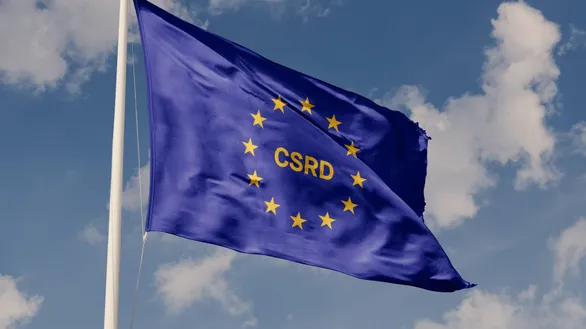Here are 5 reasons why companies shouldn't.
39% of CFOs and CEOs say sustainability would be one of the first areas to reduce spending this year, according to Gartner. The report explains that sustainability initiatives to curb organizations’ environmental impact often represent a significant upfront cost with a lack of immediate payoff, and become a less attractive category to prioritize in times of economic uncertainty.
As a survival instinct, some companies feel the need to keep their heads down until the recession and inflation are over. But we don’t have time.
As stated by the latest IPCC report, the next few years are critical to limit rising temperatures to 1.5°C. And if science isn’t enough of a compelling argument to influence your strategy, the impact of climate change on your business might be.
From resource shortages to supply chain disruptions, one could argue that the recent crises – Covid, the Russia-Ukraine conflict to name a few – are just a rehearsal for the imminent climate crisis.
So, what can you do to get your business through the current and coming disruptions? Investing in a climate-data driven program can actually help. Here’s how:
♟️ Focusing on short term costs and benefits isn't the solution
According to a report by insurance giant Swiss Re, not acting on climate will destroy around 18% of GDP by 2050. That’s the equivalent of a deep economic depression. But this number only tells part of the story. Areas like Bangladesh, Florida, and low-lying island nations will be underwater. Meanwhile, many cities will become too hot to live in. The downside risk in these regional economies isn’t 18%, it’s 100%. All of these hit the P&L, and they hit it hard.
🔻 Investing in climate action can reduce costs
Consider the industrial product company 3M, which has saved $2.2B since the launch of their “Pollution, Prevention, Pays” 3P-program in 1975 (Pollution, Mitigation, Country in English). By reformulating products, improving manufacturing processes, redesigning equipment, and recycling and reusing waste from production, they’ve reduced emissions and cut costs. This isn’t an isolated example as shipping service FedEx has reduced fuel consumption (and costs) by more than 50M gallons by converting their fleets to electric or hybrid vehicles.
⏫ Get your ESG score up to improve your bottom line
A 4 year study from global investment research firm MSCI found that companies with high ESG scores had lower capital costs, equity costs, and debt costs compared to companies with poor ESG scores. Similarly, McKinsey did a meta-analysis of more than 2,000 academic studies and concluded that better ESG scores translate to a capital cost reduction of 10%.
💰 Get funding by showing you’re serious about climate change
Companies with a climate strategy, carbon reduction targets or high ESG scores are more likely to raise debt and get funding. The growth in sustainable finance is, in part, a reflection of the pressure from regulators, consumers, and investors on businesses to prioritize ESG issues and sustainability in their strategic decision-making. As a result, organizations of all types and sizes are leveraging sustainability-linked finance instruments, such as sustainability-linked loans (SLLs) and sustainability-linked bonds (SLBs), to help communicate their sustainability targets and compensate investors if targets aren’t met. Dutch telecom TDC Net, for example, has sought to raise €500M ($504M) through sustainability-linked bonds as part of the company’s Sustainability-Linked Finance Framework. The company plans to use the funds to achieve its net-zero target by 2030 and to push digitalization as an enabler of its green transition. With the market rapidly expanding, there are also growing expectations for transparency around key performance indicators and associated sustainability performance targets of sustainability-linked finance instruments, for example carbon reduction targets.
🎯 Redefine your KPIs to inform investment and growth strategy decisions
Decision-making needs to be well-informed. Without the appropriate metrics, companies can’t navigate the low-carbon transition. It’s crucial for companies to internalize their negative externalities. But some of the typical ways of doing this can be flawed. For instance, the International Energy Agency (IEA) recommends a carbon price of $250 per tonne to reach the global net zero target by 2050, but an analysis by Kempen Capital Management estimated that a sudden carbon tax of $150 per tonne could plummet global financial markets by as much as 41%. Metrics like ROI are also faulty and do not take into account all the parameters like the real price of resources and energy.
All in all, the best way to anticipate climate risks is to get access to the right data. With real-time insights, you’ll be able to identify emission hotspots as well as costs and liabilities that are waiting to get optimized.
Want help to collect and analyze your climate data? Connect with us 👋




